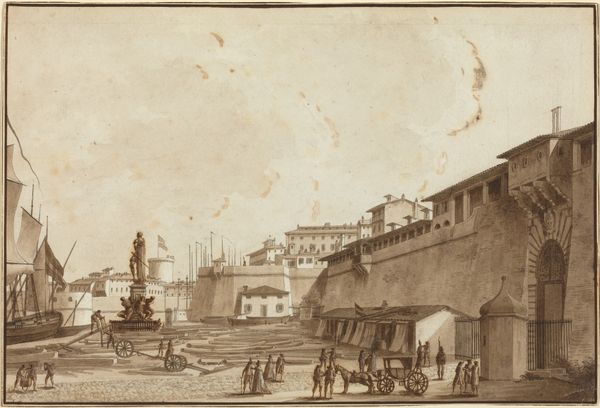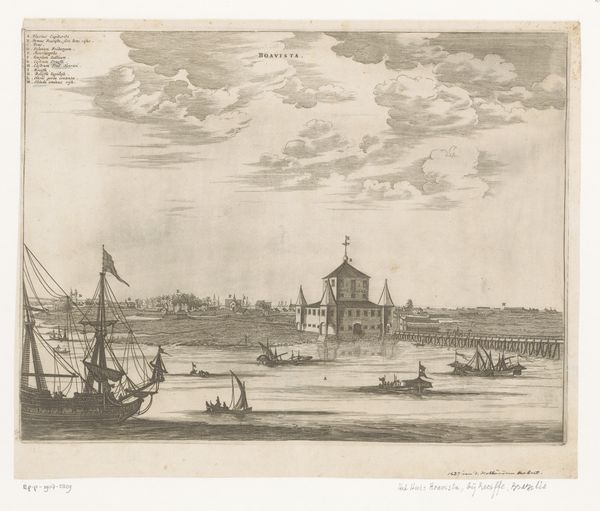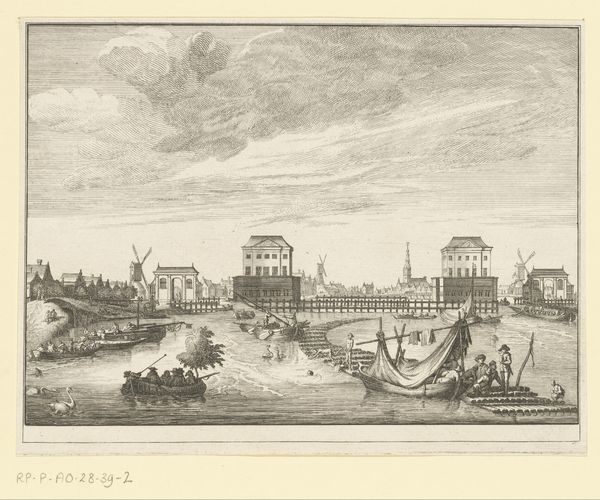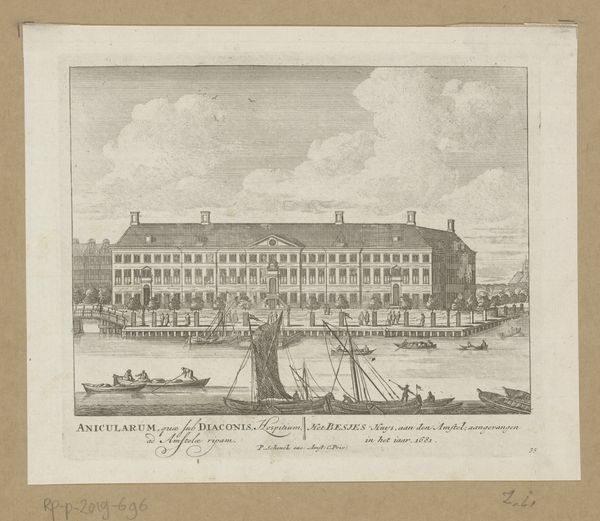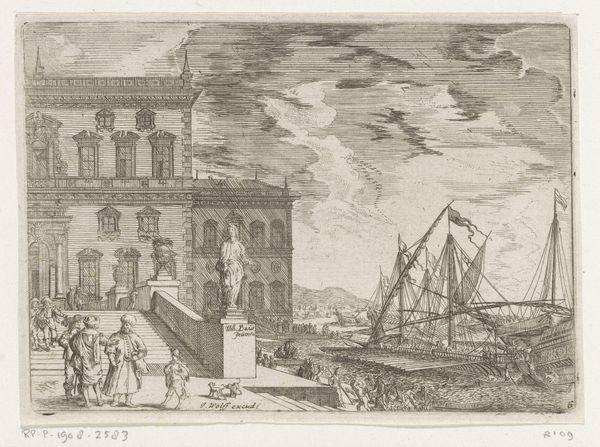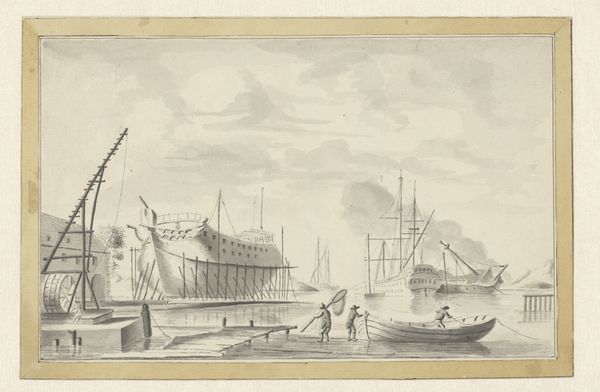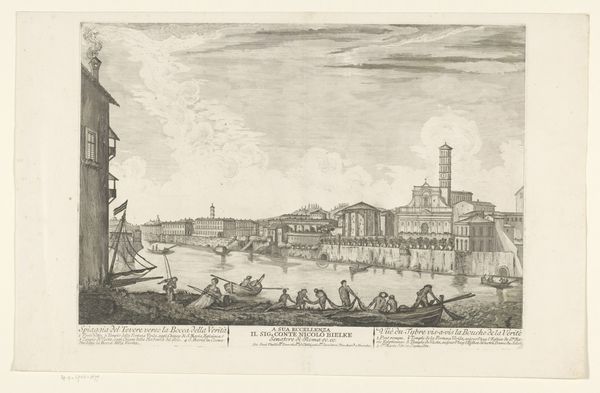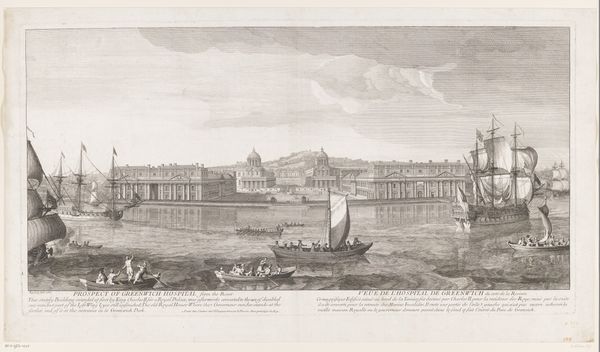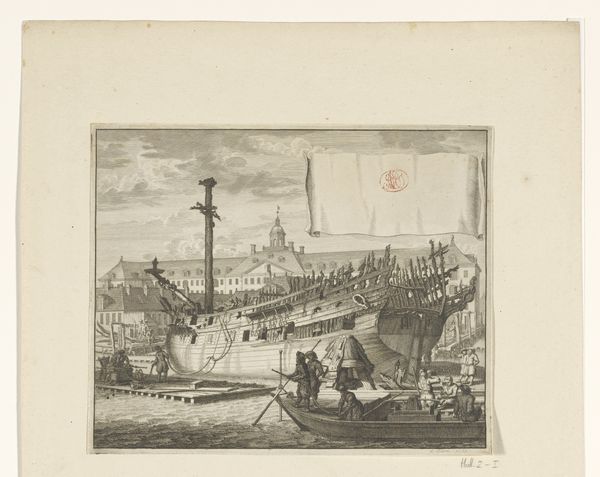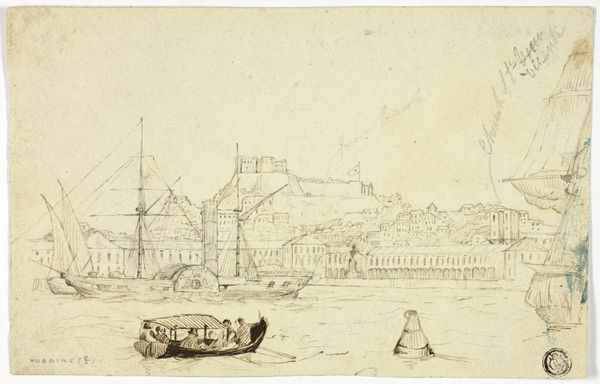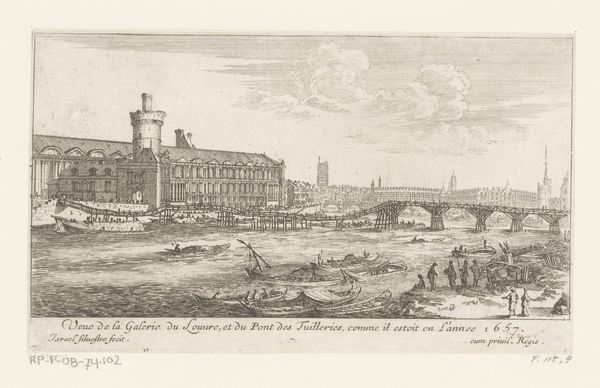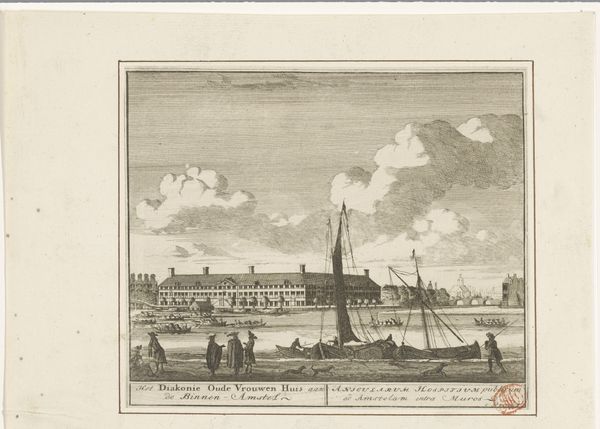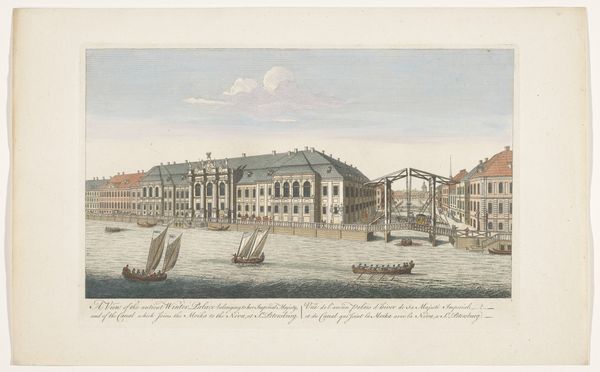
drawing, paper, ink, pen
#
drawing
#
neoclacissism
#
landscape
#
paper
#
ink
#
pen
#
cityscape
Dimensions: 137 mm (height) x 216 mm (width) (Bladmål)
Curator: Look, a fascinating cityscape! This is "Holmens Kirke" by Jes Bundsen, created in 1788 using pen and ink on paper. A rather sedate view, wouldn't you say? Editor: Sedate is definitely the word! My first impression? Tranquil. The grayscale lends it this soft, almost melancholic air. The detail is captivating—you can almost hear the water lapping against the stone quay. Curator: Indeed! The composition neatly balances architectural precision, with the clear neoclassical lines of Holmens Church. I note its stark contrast to the softer, organic shapes of the ships and figures. This reflects the period's emphasis on reason and order juxtaposed against the everyday hustle. Editor: Exactly! I find myself drawn to the small groups of figures along the waterfront. They add such an understated narrative element, don’t they? Are they waving goodbye to someone on that boat? Or simply enjoying the view as we are? And look at the reflections in the water... so subtly rendered! It’s the simple things that pull you in. Curator: Notice the almost reverential depiction of the church, how it dominates the skyline. Churches have historically been depicted as these visual anchors within urban spaces. Bundsen presents the church as the central stabilizing force, doesn’t he? Editor: Hmmm. But what's fascinating to me is how it is all also fleeting. A slice of time captured. Think about how much Copenhagen has changed since 1788! It feels a bit like finding a pressed flower in an old book...a faded beauty. Curator: Precisely. And remember the neoclassical style often sought to evoke the perceived harmony and balance of ancient Greece and Rome. Look closely – the building embodies it entirely. What emotions are being invoked, I wonder? Editor: Well, for me it speaks of a world in balance. A place of relative peace, perhaps. It also gently tugs at this feeling of transience – how moments and landscapes are both fixed and ephemeral, existing as records and as ghosts. Curator: Yes. Visualizing our present, future through records of the past. That seems to sum up the essence of why historical art holds such timeless appeal. Editor: Absolutely, because these glimpses, they speak to that secret part of ourselves which lingers somewhere outside of time, forever docked in the harbors of history.
Comments
No comments
Be the first to comment and join the conversation on the ultimate creative platform.
